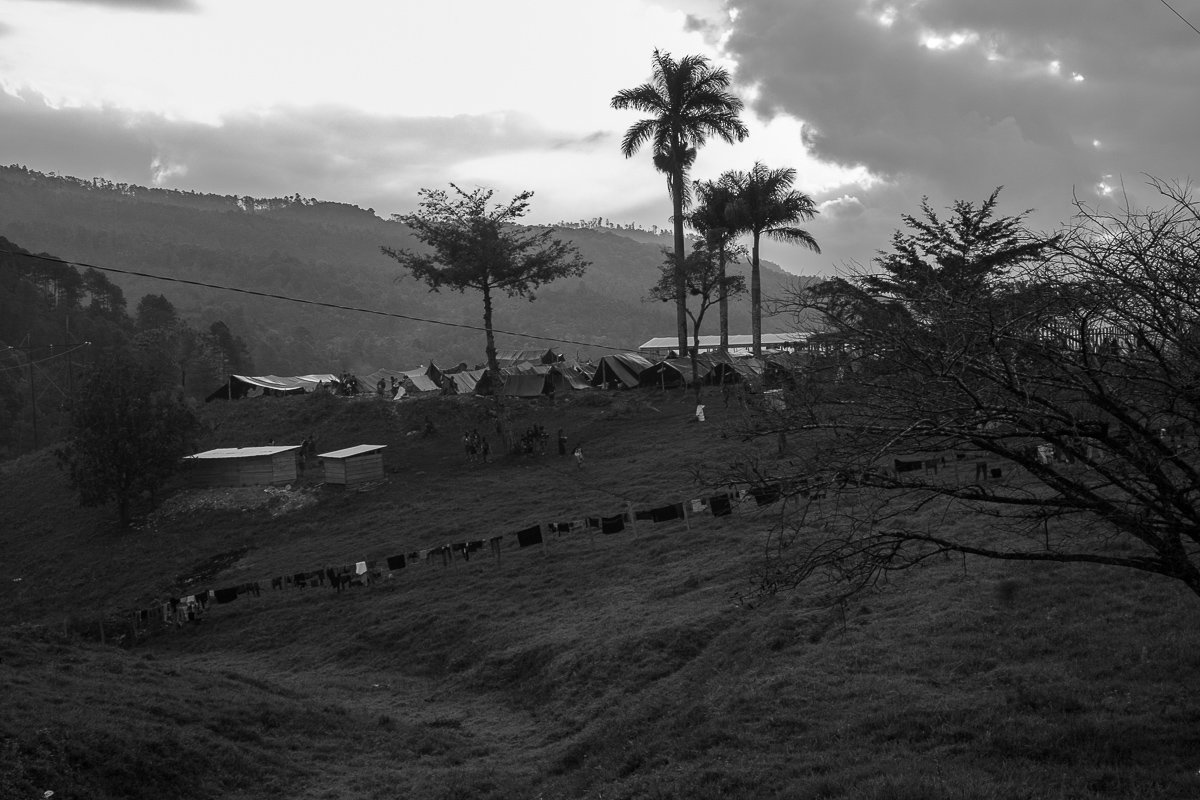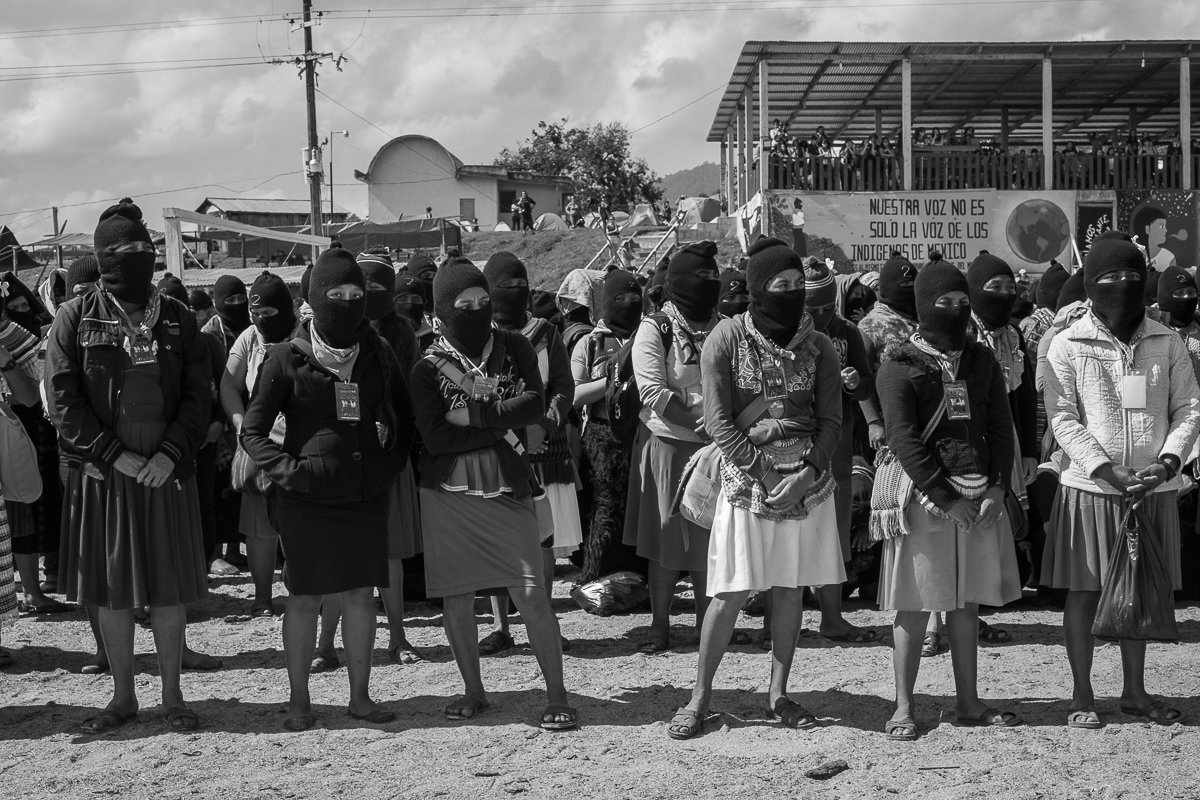
LUZ EN LAS MONTAÑAS
In 1994, the political-military organization, constituted by indigenous men and women, called the EZLN (Zapatista Army of National Liberation) rebelled against the government on the same day that the Free Trade Agreement (NAFTA) went into effect. The EZLN was born in the mountains of Chiapas, in southern Mexico, where 30 percent of the population lives in extreme poverty. The main objective of the Zapatista Movement was to eradicate the exploitation of indigenous peoples' resources and enshrine in the constitution the Law of Indigenous Cultural Rights to protect the people and build a life of respect and dignity. The spokesman of the EZLN, Subcomandante Marcos, now Galeano, was a figure of the Latin American left. Other important figures of the movement were women: Las comandantas, Ramona and Esther, and La insurgenta mayor, Ana Maria. They were the voice and the symbol of indigenous women; they vehemently demanded a new reality of equality and opportunity for indigenous women.
With great interest, I ventured into the mountains 27 years after the rebellion to meet with these powerful women, who wore a balaclava, a woollen cap that covers their heads. I was with them for five days in one of the Zapatista Autonomous Communities, where representatives met and coordinated aid and support between the communities. I took photographs during an important meeting of women from all over the world, organized by the Zapatista women. I intended to focus on them, to portray them in their environment. Today, the daughters and granddaughters of the leaders of the rural movement are at the front of the resistance and conflict; they're still fighting hard for non-discrimination and inclusion.


















